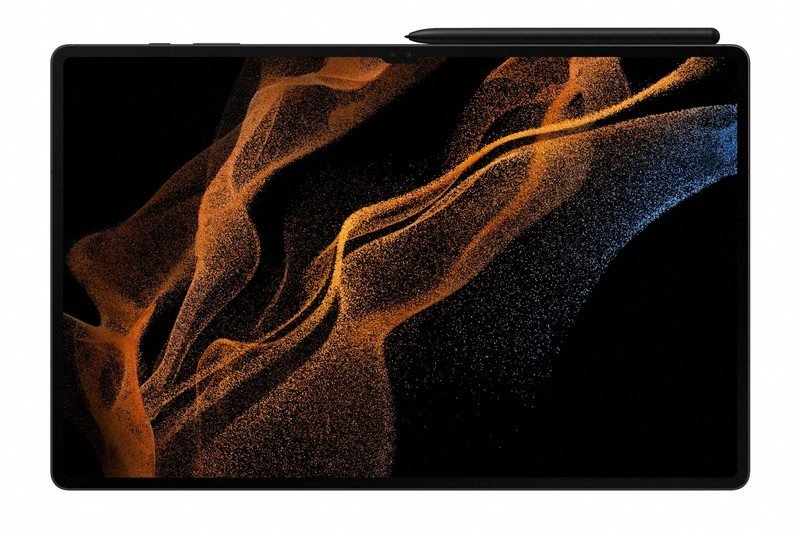Samsung Galaxy Tab S8 hands-on: notch your ordinary Android tablet
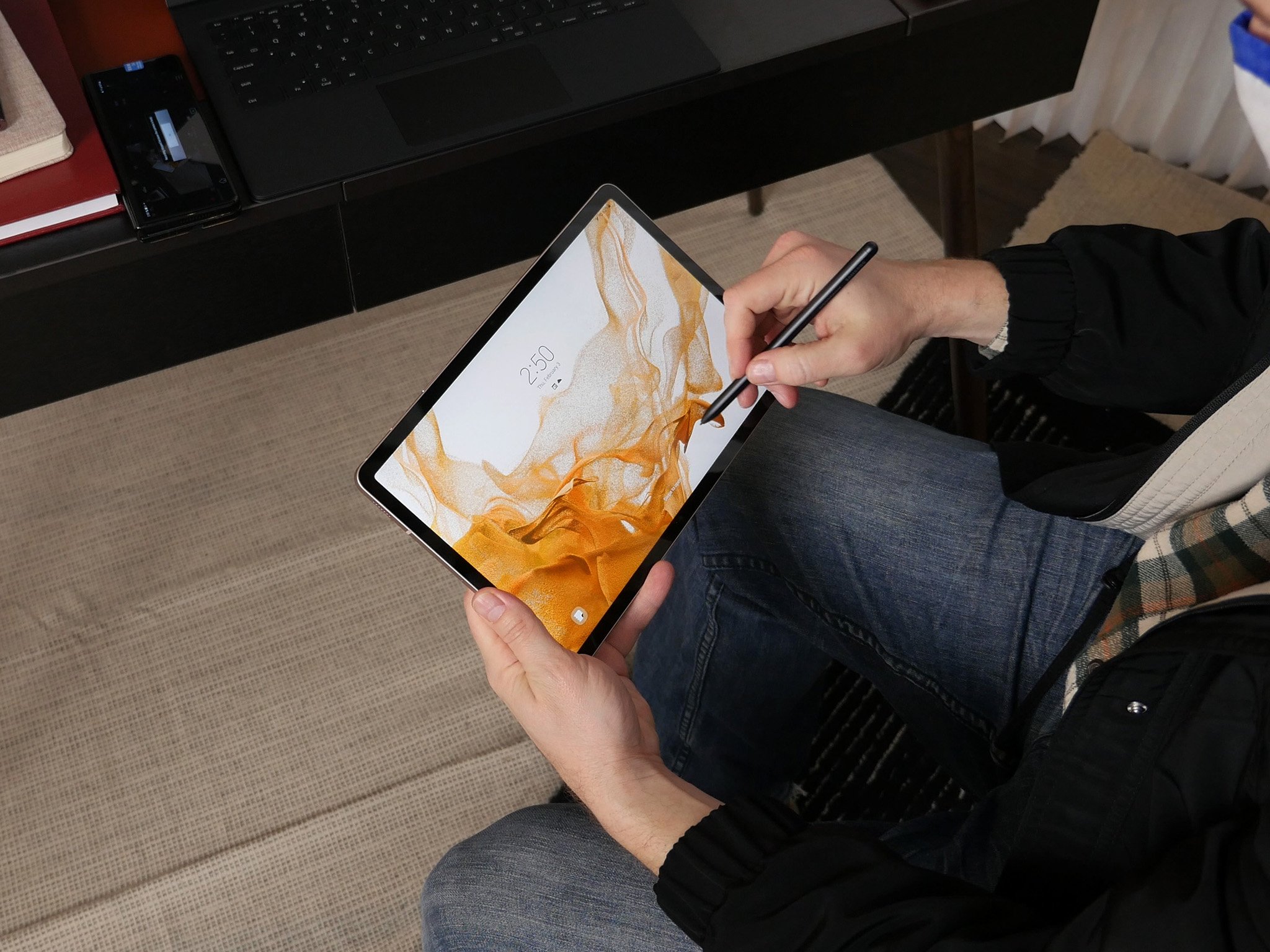
If you're anything like me, you've never much cared for Android tablets. While there are some worthwhile releases that filled a niche here and there, Samsung is hoping its new line of Galaxy Tab S8 tablets resets your expectations of what an Android tablet can be.
This time around, Samsung is offering up three varieties of the Galaxy Tab S8 for you to choose from. The least expensive Galaxy Tab S8 is the smallest one, while the Galaxy Tab S8 offers a larger body and display, and the Tab S8 Ultra slims up those bezels in an effort to better compete with the iPad Pro.
To reinforce the idea that these are the Android tablets to get, Samsung packed the best new mobile processor into each and every model, included an S Pen in the box, and even sells a handy keyboard case for each which you can get free if you preorder a Tab S8 now.
So with a line of tablets to fit a range of budgets and needs, can Samsung finally fulfill the needs of buyers everywhere? Our Galaxy Tab S8 hands-on might just help you decide.
Samsung Galaxy Tab S8 hands-on: Price and availability

All three models of Galaxy Tab S8 are available to preorder right now and, as an added bonus, Samsung will throw in a free keyboard case with every preorder. As you'll find out in the hands-on below, this keyboard tray is an absolute must-have accessory for the tablet and completely changes how it looks and feels.
The smallest of the three is the Galaxy Tab S8 with an 11-inch 120Hz LCD display, which starts at $700 for the model with 8GB RAM and 128GB storage. An upgraded model with 12GB RAM and 256GB storage can be had for a bit more money.
The slightly larger Galaxy Tab S8+ increases the screen size to 12.4-inches, swaps out the LCD for a 120Hz AMOLED panel, and starts at $900 for 8GB RAM and 128GB storage. Again, Samsung is offering up an upgraded version with 12GB RAM and 256GB storage for a bit more.
Get the latest news from Android Central, your trusted companion in the world of Android
The creme de la creme of the bunch is the Galaxy Tab S8 Ultra, which increases the display size to a whopping 14.6-inches and has the highest-quality 120Hz AMOLED panel. This one starts at $1,100 for the 8GB RAM and 128GB storage model, and offers two additional upgrades: 12GB + 256GB, and 16GB + 512GB.
Samsung Galaxy Tab S8 hands-on: Triple threat design

The first thing you'll notice when using any of the three Tab S8 models is the almost complete lack of bezels. The two smaller Tab S8 models feature thicker bezels all around the screen, but those bezels are completely uniform all the way around.
That means the smaller two Tab S8 models are easily the most comfortable to hold, and that's before mentioning the size.
The Tab S8 Ultra — pictured above — slims those bezels down considerably, keeping the uniform shape everywhere except for one side where a notch exists. Because of how Samsung designed the tablet and the accompanying software, the notch is no big deal when you're using it in landscape mode.
| Category | Galaxy Tab S8 | Galaxy Tab S8 Plus | Galaxy Tab S8 Ultra |
|---|---|---|---|
| Chipset | Snapdragon 8 Gen 1 | Snapdragon 8 Gen 1 | Snapdragon 8 Gen 1 |
| Display | 11-inch LCD (120Hz) 2560 x 1600 | 12.4-inch Super AMOLED (120Hz) 2800 x 1752 | 14.6-inch Super AMOLED (120Hz) 2960 x 1848 |
| Memory | 8GB | 8GB | 8GB, 12GB, or 16GB |
| Storage | 128GB or 256GB | 128GB or 256GB | 128GB, 256GB, or 512GB |
| Rear Camera | 13MP AF + 6MP UW + Flash | 13MP AF + 6MP UW + Flash | 13MP AF + 6MP UW + Flash |
| Front Camera | 12MP UW | 12MP UW | 12MP FF + 12MP UW |
| Battery | 8,000mAh Li-Ion 45W Fast Charging | 10,090mAh Li-Ion 45W Fast Charging | 11,200mAh Li-Ion 45W Fast Charging |
| Audio | Quad Speakers + Dolby Atmos | Quad Speakers + Dolby Atmos | Quad Speakers + Dolby Atmos |
| Authentication | Face Unlock, fingerprint on power button | Face Unlock, on-display fingerprint sensor | Face Unlock, on-display fingerprint sensor |
| Connectivity | WiFi 6E (6GHz) Bluetooth 5.2 | WiFi 6E (6GHz) Bluetooth 5.2 5G (optional) | WiFi 6E (6GHz) Bluetooth 5.2 |
| S Pen | ✔️ | ✔️ (Improved low latency) | ✔️ (Improved low latency) |
| microSD card slot | ✔️ (up to 1TB) | ✔️ (up to 1TB) | ✔️ (up to 1TB) |
| 3.5mm headphone jack | 🚫 | 🚫 | 🚫 |
| Dimensions | 9.99" x 6.51" x 0.25" | 11.22" x 7.28" x 0.22" | 12.85" x 8.21" x 0.22" |
| Weight | 1.10 lb | 1.27 lb | 1.60 lb |
| Colors | Graphite, Silver, Pink Gold | Graphite, Silver, Pink Gold | Graphite |
I didn't notice the notch at all when using the Tab S8 Ultra in landscape orientation.
That's because the status bar remains black in most apps and, because this is an OLED display, blends right in with the notch itself. Samsung says it was unable to retain camera quality with such tiny bezels so it had to add a small notch to the device.
As Michael pointed out in his editorial on the notch itself, I didn't notice it at all when using the tablet in landscape.
Holding it in portrait mode is a bit of a different story.
There's no getting around the existence of the notch when held like this but, to be realistic, it's not likely that you're going to hold this tablet in portrait mode for very long. That's because the Galaxy Tab S8 Ultra is huge. With a 14.6-inch screen and tiny bezels, this simply is not a tablet that you're going to want to hold for any length of time.
Aside from the sheer bulk of the device, having almost no bezels means there's basically nowhere to comfortably hold such a large screen. I can see plenty of hands getting tired and cramped after just a minute or two after holding it. Really, if you want a tablet to watch content in bed or just to hold on the couch, this isn't the one you should pick.

It's not likely that you're going to hold this tablet in portrait mode for very long. That's because the Galaxy Tab S8 Ultra is huge.
Rather, the Tab S8 Ultra is much better off as a laptop replacement-style tablet, especially when paired with the keyboard case. The keyboard itself magnetically clasps onto the bottom of the tablet — the bottom of which is defined when holding in landscape orientation with the notch on the top — and the back cover stays strongly magnetically attached to the tablet even with the keyboard detached.
In fact, I thought this back cover was part of the tablet when I first picked it up. The magnetic attachment is extremely strong and the kickstand and S Pen holder are designed in a way that feels as if they were supposed to be there in the first place. Honestly, I don't understand why Samsung would ship this tablet without this keyboard case. It really makes all the difference in the world.
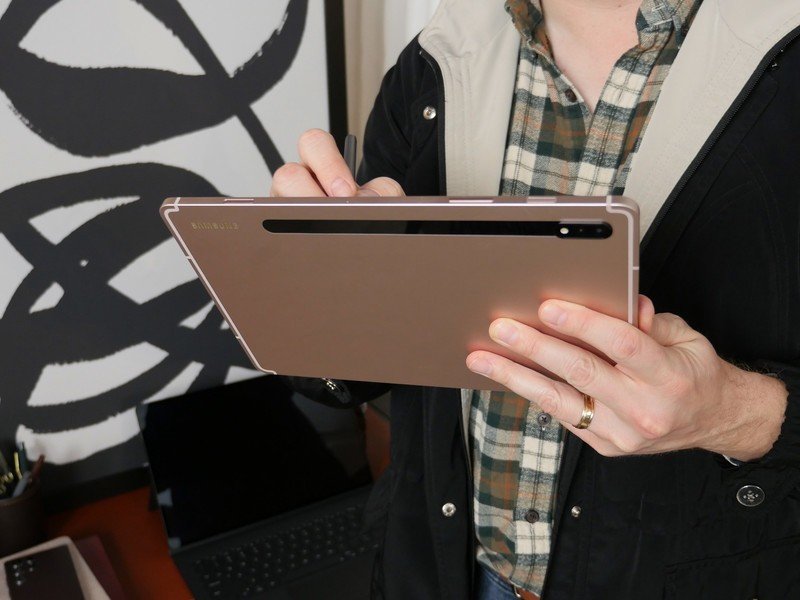
Each Tab S8 model does ship with an S Pen, thankfully, but doesn't have any sort of slot to dock the S Pen in.
The rest of the smaller Tab S8 family is certainly more hand-friendly given the size, weight, and inclusion of larger bezels. Normally, on phones, I'm a stickler for tiny bezels. Tablets, on the other hand, require at least a finger's-width of a bezel to remain comfortable to hold for any period of time.
The Tab S8 and Tab S8+ certainly fit that description and at 1.10lb or 1.27lb are actually reasonably comfortable to hold for a good bit of time.
The corners are smoothly chamfered, too, which further aided in enhancing the comfort level for handheld use. If you've ever used a Galaxy Tab S7, you'll feel right at home here. The design is essentially the same.
Each Tab S8 model does ship with an S Pen, thankfully, but doesn't have any sort of slot to dock the S Pen in. Rather, you'll be magnetically attaching the S Pen where you find it convenient. The S Pen itself has a flat side that attaches to most of the surface area of the Tab S8, meaning you can snap it to wherever is most convenient.
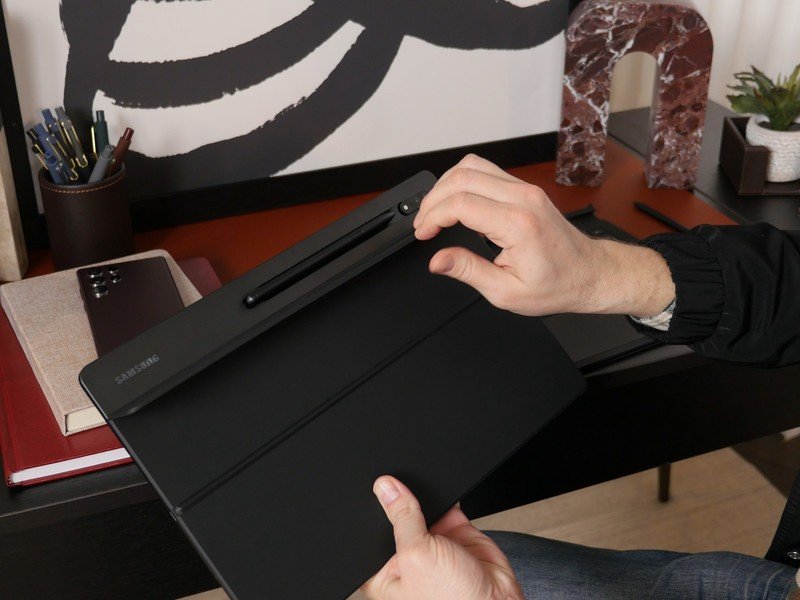
For me, having that keyboard case with the built-in flap for S Pen storage just made more sense, though. It fits perfectly inside and, since the flap is magnetically attached to the tablet, means you won't easily lose the pen so long as you're putting it back in its proper place when you're done using it.
Samsung Galaxy Tab S8 hands-on: Software made for a tablet

Along with this new hardware release is an updated version of Samsung's One UI 4, built upon Android 12. One UI 4.1 brings along smoother multitasking and multi-window support, including the ability to split the screen up to three ways. We saw this functionality on the Galaxy Z Fold 3 when it launched last Fall and now it's here to stay on the tablet side.
Resizing windows is effortless and works exactly as you might imagine.
Resizing windows is effortless and works exactly as you might imagine. Just grab the border with your S Pen or finger and move it to where it makes the most sense. Samsung even has four different configurations that app windows can snap into, making it more like how Windows 11 behaves on a desktop computer — or, maybe more appropriately, a Microsoft Surface tablet.
The wider aspect ratio is very conducive to using apps in split-screen, as they can comfortably fit on the large display in a way where information is pleasant to read.
While it's technically a hardware upgrade, the improvement in latency on the S Pen for the Tab S8+ and Tab S8 Ultra is very noticeable. The regular Tab S8 still has the 9ms response time from the Tab S7 series, but the larger two Tab S8 models drop that latency to just 2.8ms. That's the same improvement that the Galaxy S22 Ultra saw.
In short, it means that writing with the S Pen on the larger two tablets will feel even more authentically like a pen than the previous generation did.

Samsung has also more deeply tied its tablets in with its full ecosystem.
Samsung has also more deeply tied its tablets in with its full ecosystem. One example is that you can use a Galaxy S22 Ultra as a Wacom tablet or color palette for your Tab S8. While it's not something that most users will be able to take advantage of, this sort of ecosystem tie-in is pretty incredible to see.
Samsung has also improved things like Wi-Fi connectivity, making it nearly instant to share something between your latest Galaxy phone and the tablet over Wi-Fi 6E using Quick Share.
DeX has also been upgraded with new vertical functionality, which might help in certain situations where a vertical screen might make more sense for the work you're doing.
Thanks to 5 years of promised updates, your tablet's software won't feel old for a very, very long time and that might just be the biggest improvement of all.
Last but absolutely not least is the astounding promise Samsung made recently regarding software updates. Like the Galaxy S22 family, the Tab S8 family of products will receive five years of updates. That includes four major OS updates — topping out at Android 16 in 2026 — along with 5 years of security updates.
That means your tablet's software won't feel old for a very, very long time and that might just be the biggest improvement of all.
Samsung Galaxy Tab S8 hands-on: Is it a laptop replacement?
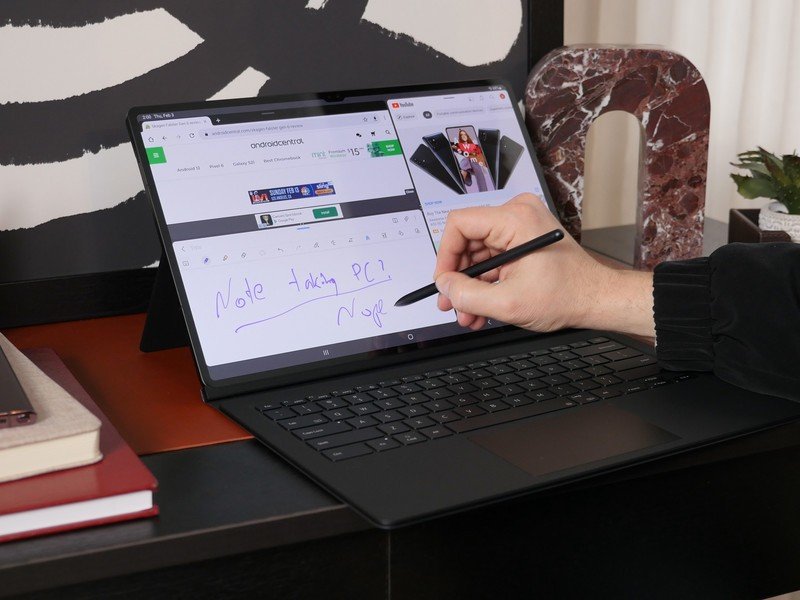
This question has been on the tongues of many for quite some time, especially in the world of Android tablets. As far as hardware functionality is concerned, I would be completely comfortable with using the Tab S8 Ultra, in particular, in place of a laptop.
As far as hardware functionality is concerned, I would be completely comfortable with using the Tab S8 Ultra, in particular, in place of a laptop.
But there are some big caveats to that answer.
First off, to feel like a complete laptop replacement, any Tab S8 model will need the keyboard case. Personally, I'm a bit perplexed as to why Samsung wouldn't include this case with the Tab S8 Ultra, specifically. Samsung clearly designed the Tab S8 Ultra to be primarily used in landscape mode and when docked in a keyboard.
To me, the Tab S8 Ultra has the potential to be the best Microsoft Surface competitor in the industry, but it's going to cost you a pretty penny to get there. At $1,100 for the base model, you'd still need to pick up the $350 keyboard case for it to really make sense.
That's $1,450 for a base model Tab S8. Meanwhile, a similar-spec Microsoft Surface costs around $1,200 with the keyboard attachment.
That's a huge improvement right off the bat, and that's not even mentioning the fact that Windows 11 is substantially better on a productivity level than Android could ever hope to be.
There's no doubt in my mind that these are the very best Android tablets on the market.
Android 12L supposedly represents Google's renewed interest in tablets and larger screens, but we'll need to wait for app developers to also be interested in making Android tablets a better experience.
Samsung has certainly done all the legwork it can to make the experience excellent, though, and there's no doubt in my mind that these are the very best Android tablets on the market.

